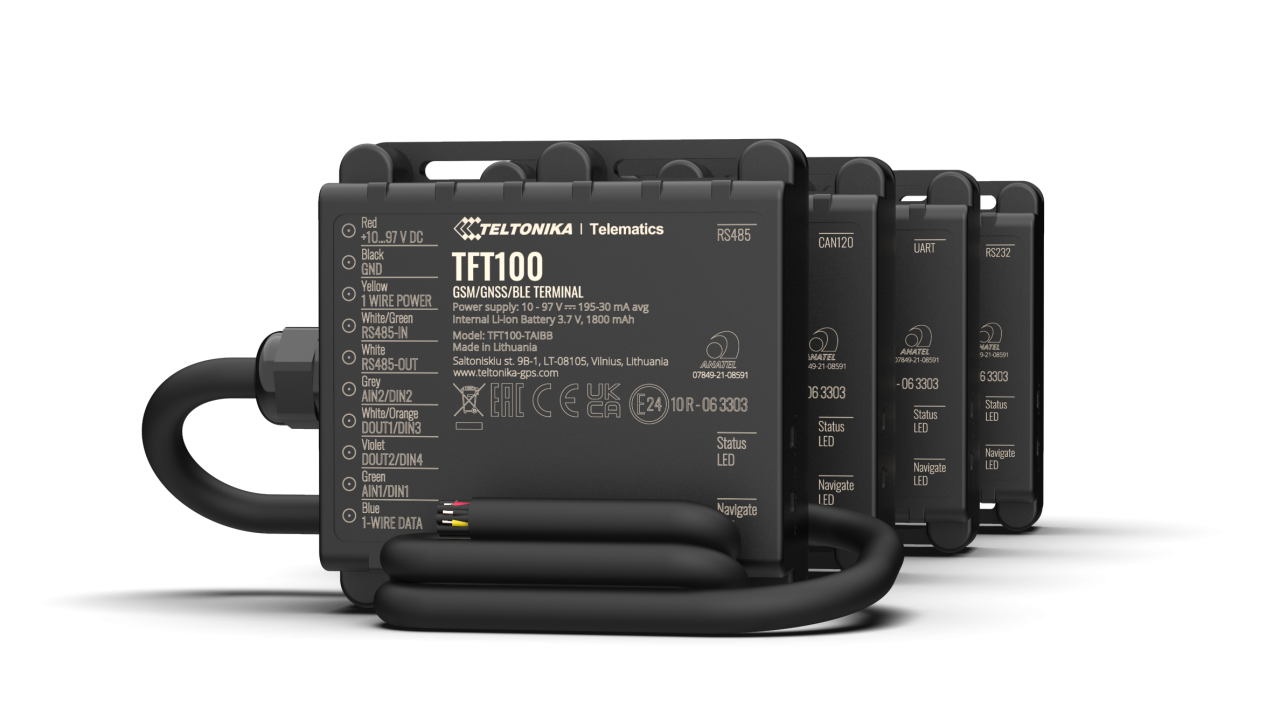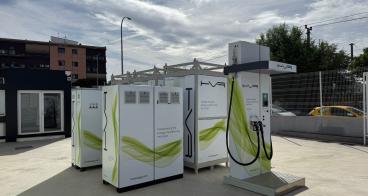TFT100 - electric mobility and heavy machinery GPS tracker
Easily adaptable and versatile e-mobility GPS tracker – TFT100 has a 10-97V power supply range and Manual CAN feature
Product Details
TFT100 – the ultimate e-mobility GPS tracker. This versatile tracking device is used with a wide range of E2W, E3W, and E4Ws as well as e-heavy machinery due to its 10-97V wide voltage support.
How it works - system integrators connect the trackers to each EV in the fleet and configure them according to a customer's needs. The tracker collects multiple real-time metrics, like location, sensor data, ignition on counter, tracker battery level, input/output data, and with the help of Manual CAN functionality – CAN bus data - such as battery level, current, voltage, charge status, fault codes, etc.
The information is transmitted to the tracking platform via a GPRS network. The fleet managers can track each TFT100-equipped unit and gather vital information about its operational status, correct/incorrect usage, location, and other data depending on the use case. This allows for the detection of problems at an early stage, initiates predictive maintenance, and avoids unexpected costs.
Availability
Discover cities and markets where the product is available







